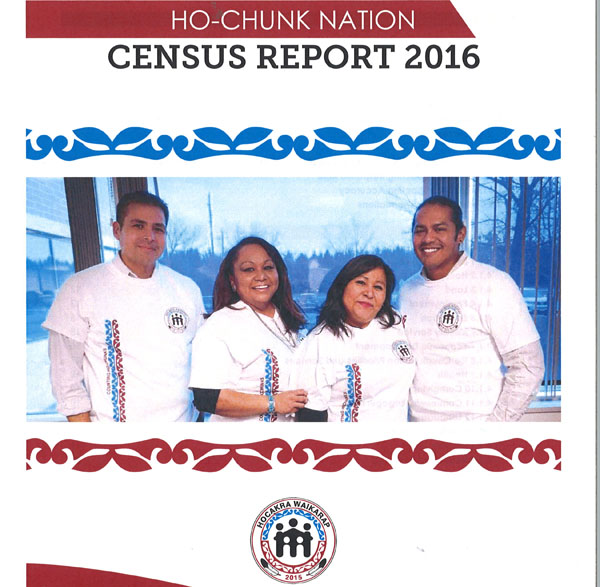Census concluded, numbers released to public
By Ken Luchterhand

The 2015 Ho-Chunk Census has concluded and the results have been released. The data was given to the Ho-Chunk Legislature during the week of Jan. 23.
“We were targeting a 70 percent response rate and received 51 percent,” said Planning Division Director Michael Rave. “Still, it was a success. We had a much better response than our previous census, which was only 23 percent.”
To achieve the results, Census staff used a variety of methods in contacting Ho-Chunk members for data. Those methods include online form submission (34 percent), paper form (12 percent), telephone (3 percent), and field workers (1 percent), according to Projects Specialist Angie McDonald.
Gathering of Census information began in December 2015 and concluded in August 2016.
The data collected shows that 2,862 people completed the surveys. Also, 468 or 19 percent of adults listed that they are unemployed or underemployed and looking for other work.
There are 196 members, or 8 percent, who noted that they currently own a business. The median income of respondents is $30,000 per year. There are 12 percent who indicated they do not have health insurance or do not understand tribal health programs.
In the housing department, 41 percent, or 1,015 people, indicated they are homeowners and 40 percent, or 988 people, indicated they are renters.
For education, 21 percent, or 525 people, are high school graduates and 29 percent, or 714 people, have some college but no degree, McDonald said.
The last census conducted by the Ho-Chunk Nation was in 1994, a 20-year period when the Nation mandates that census activities must be conducted every 10 years. Therefore, a census in 2004 was missed.
Besides collecting data every 10 years, Rave stated that Planning and Development is exploring ways to develop and improve the types of data that can be used.
“We want to keep the data fresh,” he said. “We’ll be collecting relevant information between the 10-year census collection dates as needed by the government departments. The data may be necessary or helpful to a certain department, Office of the President, or by Legislature, in making informed decisions that will affect Ho-Chunk members.”
Another project by the Planning Department is to develop a census handbook that will help guide the information gathering, analyzing and dissemination in the future. The language of the handbook will be oriented so that users can see how information can be used in the decision making process. Plans are to include younger people, such as high school students, in future census projects, said Grants Specialist Pine Giroux.
“They’re the next generation of leaders, so they should play a role in it,” she said.
The data collected is necessary for applying for grants, as well as making informed decisions.
The analyzing of the data is to promote the five areas of concern for tribal members, as spelled out by President Wilfrid Cleveland. Those five areas are housing, education, health, employment and land base.
As they gather requested information in the future, it is hoped that it will be real-time data, meaning it will be current with the time that it is being read and disseminated, he said. To keep and maintain real-time data it is hoped that the departments work to develop relevant census questions for their departments so that they will take ownership of the effort and the results.
Home